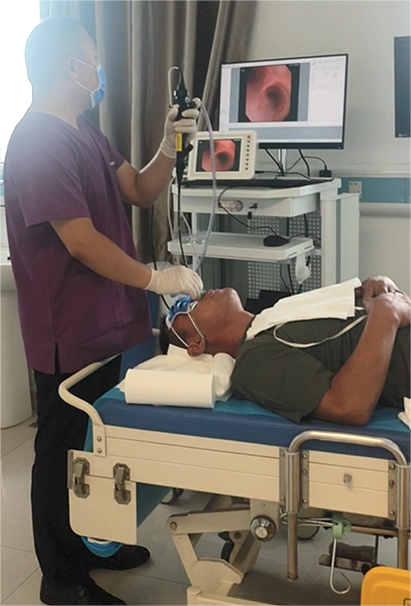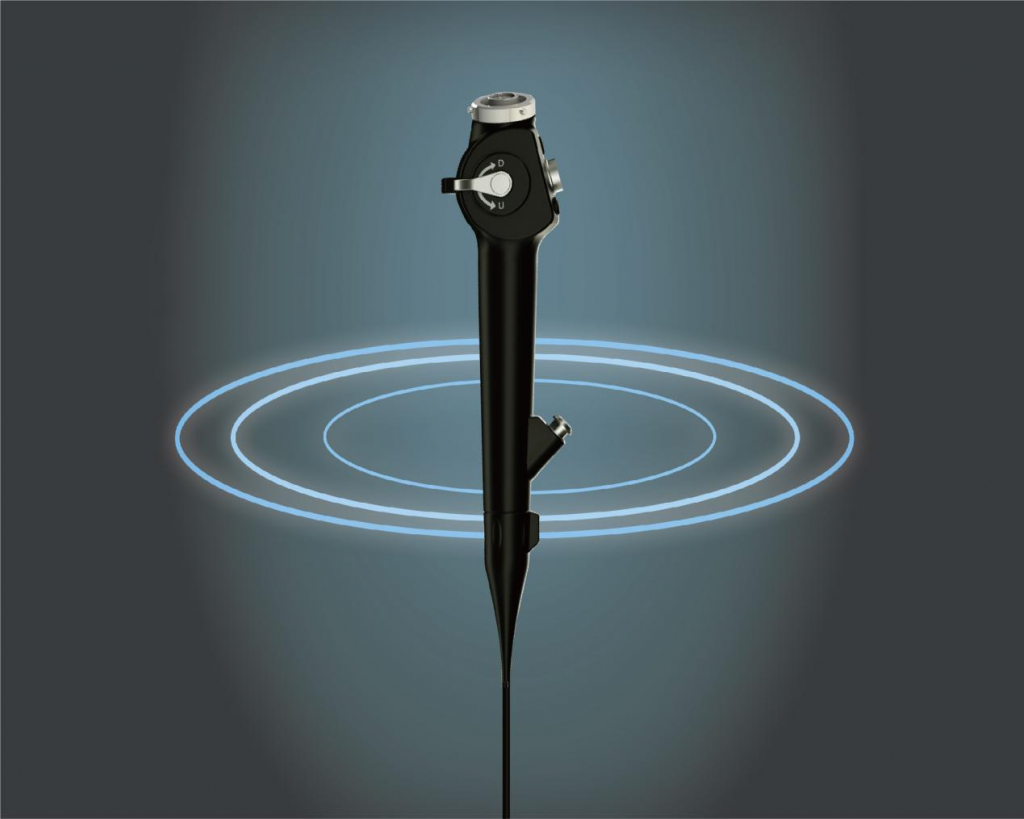Understanding Bronchoscopy Samples – A Guide
Dec 21, 2023
Bronchoscopy samples are essential for diagnosing lung conditions. This minimally invasive procedure has become an increasingly important diagnostic tool for respiratory system examination, allowing healthcare professionals to obtain accurate diagnoses and provide appropriate treatments. In this guide, we will provide a comprehensive overview of bronchoscopy samples, covering the different types, their role in diagnosis, and the process of collecting and analyzing them. We will also discuss the benefits and limitations of bronchoscopy samples, emphasizing why this procedure is crucial for patients with respiratory issues. Read on to learn more about this essential diagnostic tool.
What are Bronchoscopy Samples?
Bronchoscopy samples are tissue or fluid samples obtained through the procedure of bronchoscopy. This medical test involves inserting a thin, flexible tube with a camera on the end called a bronchoscope through the nose or mouth and down into the lungs. The tube allows a healthcare professional to visually examine the respiratory system and collect samples for diagnostic purposes.
There are a variety of different types of bronchoscopy samples that can be collected, depending on the specific medical issue being investigated. Pulmonary tissue samples, for example, may be obtained through the removal of small fragments of lung tissue for examination. Another type of bronchoscopy sample is a lung biopsy, which involves the removal of a larger piece of tissue for more detailed analysis.
The collection of bronchoscopy samples is a vital tool in the diagnosis of many different conditions affecting the respiratory system. From lung cancer to infections to various types of lung disease, these samples provide crucial insights into what is happening within the body and help guide treatment decisions.
The Role of Bronchoscopy Samples in Diagnosis
Bronchoscopy samples are a critical tool in the diagnosis of various lung conditions. These minimally invasive samples can aid in detecting and diagnosing lung cancer, lung infections, and other respiratory diseases, helping healthcare professionals provide accurate diagnoses and appropriate treatments.
For lung cancer diagnosis, bronchoscopy samples can be used to detect abnormal cells or tumors in the lungs. This procedure is especially useful for identifying tumors in their early stages, making it easier to treat the cancer before it spreads.
Bronchoscopy samples are also useful in diagnosing lung infections. By analyzing the collected samples, healthcare professionals can identify the specific type of infection and determine the appropriate course of treatment.
In addition to cancer and infections, bronchoscopy samples can also aid in the detection of other lung diseases such as pulmonary fibrosis or sarcoidosis. The samples can be used to examine lung tissue and detect any abnormalities or signs of disease.
Overall, bronchoscopy samples are an invaluable diagnostic tool for detecting and diagnosing a range of lung conditions. This minimally invasive procedure can help healthcare professionals provide effective treatment and improve patient outcomes.
How Bronchoscopy Samples are Collected

Bronchoscopy samples are obtained through a minimally invasive procedure called bronchial washing. This is the most common method of collecting bronchoscopy samples and involves a healthcare professional using a flexible bronchoscope to access the airways within the lungs.
During the procedure, a saline solution is instilled into the airways, and then suctioned out. This process helps to collect cells, mucus, and other fluids for analysis. In some cases, a biopsy may also be taken for further examination.
The entire procedure takes approximately 30 minutes, and can be completed on an outpatient basis. Patients are typically sedated and given local anesthesia to minimize discomfort during the procedure. Afterward, patients are monitored for a short period before being discharged.
Bronchial washing is a safe and effective method for collecting bronchoscopy samples, and is preferred due to its minimally invasive nature. It allows for accurate diagnosis of various lung conditions while minimizing discomfort and recovery time for patients.
Analyzing Bronchoscopy Samples
Once bronchoscopy samples have been collected, they are analyzed to aid in the diagnosis of lung conditions. Healthcare professionals use various methods and techniques to examine and interpret the samples for accurate diagnosis.
One common method for analyzing bronchoscopy samples is through cytology. This involves examining the cells present in the samples under a microscope to identify any abnormalities. Cytology can help diagnose lung cancer, tuberculosis, and other infectious diseases.
Another technique used for analyzing bronchoscopy samples is culture testing. This involves growing bacteria or fungi present in the samples in a laboratory to identify the specific organism causing the infection. Culture testing is valuable in diagnosing bacterial and fungal infections.
In addition to cytology and culture testing, molecular analysis of bronchoscopy samples is becoming increasingly common. This involves analyzing genetic material present in the samples through techniques such as polymerase chain reaction (PCR) or next-generation sequencing (NGS). Molecular analysis can provide more precise diagnosis for conditions such as lung cancer and autoimmune disorders.
Overall, the analysis of bronchoscopy sample is a critical step in the diagnosis of lung conditions. By using various methods and techniques, healthcare professionals can accurately identify the underlying condition and provide appropriate treatment.
Benefits and Limitations of Bronchoscopy Samples
Bronchoscopy samples are an invaluable diagnostic tool in the examination of the respiratory system. This minimally invasive procedure allows healthcare professionals to obtain samples directly from the lungs, aiding in the diagnosis of various lung conditions.
One of the primary benefits of bronchoscopy sample is their ability to detect lung cancer and other respiratory diseases in their early stages. This can enable healthcare providers to begin appropriate treatment at an earlier stage, improving the chances of successful outcomes.
Additionally, bronchoscopy sample are less invasive than other diagnostic procedures, such as surgery, meaning less discomfort and a quicker recovery time for patients.
However, like all diagnostic tools, bronchoscopy sample also have limitations. The procedure is not foolproof and may not always provide a definitive diagnosis. There is also a small risk of complications, such as bleeding or infection, which must be carefully considered before proceeding with the procedure.
Despite these limitations, bronchoscopy sample remain a valuable diagnostic tool in the examination of the respiratory system. Healthcare professionals must weigh the benefits and limitations of this procedure and determine the most appropriate course of action for each individual patient.
Conclusion
To conclude, bronchoscopy sample are a vital diagnostic tool for healthcare professionals in detecting various lung conditions. This minimally invasive procedure provides healthcare professionals with the necessary samples for accurate diagnosis and appropriate treatment. By analyzing bronchoscopy sample, healthcare professionals can diagnose lung cancer, lung infections, and other respiratory diseases efficiently.
While there are limitations to this procedure, such as the risk of bleeding or infection, the benefits far outweigh the drawbacks. Bronchoscopy sample are less invasive than other diagnostic tools, making them a preferred option for patients and healthcare professionals alike.
Overall, bronchoscopy sample play a crucial role in diagnosing lung conditions, aiding healthcare professionals in providing optimal care for their patients. If you or a loved one is experiencing respiratory symptoms, bronchoscopy sample may be the diagnostic tool needed to provide an accurate diagnosis and appropriate treatment.
Categories
Latest Articles

Disposable Nephroscopes: Redefining Safety & Efficiency in Urology
Introduction The shift towards minimally invasive urological surgery has found a pivotal ally: the disposable nephroscope. As traditional reusable scopes grapple with persistent biofilm contamination risks and soaring sterilization costs, the global medical community is rapidly adopting single-use solutions. This article analyzes the clinical value, technological evolution, and dynamic innovation landscape driving this transformative shift. ... Read more

Disposable Video Laryngoscope Blades: The Ultimate Solution for Preventing Cross-Contamination
In the operating room, as the cold light of a video laryngoscope illuminates a patient’s airway, an age-old medical challenge is being redefined: How can life-saving instruments avoid becoming vectors of infection? Jiangsu MoleMedical drives an innovative safety revolution—replacing reusable devices with single-use, sterile laryngoscope blades that create a pure barrier for critical airways. Traditional video ... Read more
-2.jpg)
FDA & CE Approved Video Laryngoscope: What Makes It Stand Out?
Introduction In high-pressure emergencies and precision-driven operating rooms, video laryngoscopy is revolutionizing airway management. Mole Medical’s FDA and CE-certified technology replaces tactile-dependent “blind intubation” with real-time visual navigation – enhancing safety, accuracy, and clinical outcomes worldwide. Why Certification Matters Mole Medical’s dual certifications validate its global compliance and performance: FDA Clearance: Rigorous validation of safety/efficacy ... Read more

Mole Medical Showcases Advanced Endoscopy Solutions at CMEF Autumn 2025, Driving Global Partnerships
Guangzhou, China – September 26-29, 2025 – The 92nd China International Medical Equipment Fair (CMEF Autumn) concluded successfully on September 29th at the Canton Fair Complex in Guangzhou. Mole Medical Technology Co., Ltd. (Mole Medical) made a significant impact at the event, drawing global medical professionals and partners to its booth (Hall 2.1, Stand Q24) ... Read more

How to Use Disposable Ureteroscopes Safely and Efficiently
In the field of urology, the application of disposable electronic ureteral-kidney pelvis endoscopy catheters is leading the technological innovation in minimally invasive surgeries. According to the 2024 multi-center research data from China’s urology department, among the over 5,000 surgeries included, the patient group using disposable catheters performed significantly better in key indicators such as operation ... Read more



